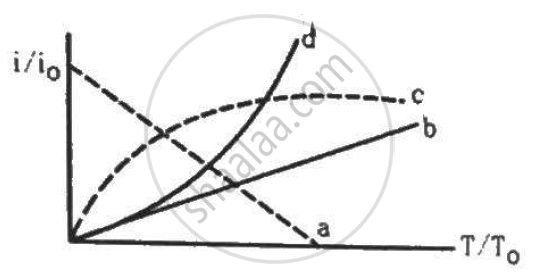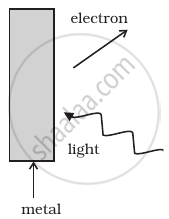Advertisements
Advertisements
Question
Would you prefer a material with a high melting point or a low melting point to be used as a cathode in a diode?
Solution
We will prefer a material with high melting point to be used as the cathode in a diode. The material of the cathode of a diode should be resistant to high temperature, have high melting point and be electrically conductive because thermionic emission occurs at high temperature.
APPEARS IN
RELATED QUESTIONS
Why should gases be insulators at ordinary pressures and start conducting at very low pressures?
How does one explain the emission of electrons from a photosensitive surface with the help of Einstein's photoelectric equation?
How will the thermionic current vary if the filament current is increased?
An isolated metal sphere is heated to a high temperature. Will it become positively charged due to thermionic emission?
A diode value is connected to a battery and a load resistance. The filament is heated, so that a constant current is obtained in the circuit. As the cathode continuously emits electrons, does it become more and more positively charged?
Let i0 be the thermionic current from a metal surface when the absolute temperature of the surface is T0. The temperature is slowly increased and the thermionic current is measured as a function of temperature. Which of the following plots may represent the variation in (i/i0) against (T/T0)?

The anode of a thermionic diode is connected to the negative terminal of a battery and the cathode to its positive terminal.
Answer the following question.
Define the term "Threshold frequency", in the context of photoelectric emission.
If a light of wavelength 330 nm is incident on a metal with work function 3.55 eV, the electrons are emitted. Then the wavelength of the wave associated with the emitted electron is (Take h = 6.6 × 10–34 Js)
Emission of electrons by the absorption of heat energy is called ____________ emission.
Define the work function of a metal. Give its unit.
What do you mean by electron emission? Explain briefly various methods of electron emission.
In which case is electron emission from a metal not known?
Photoelectric emission is observed from a metallic surface for frequencies ν1 and ν2 of the incident light (ν1 > ν2). If the maximum value of kinetic energy of the photoelectrons emitted in the two cases are in the ration 1 : n then the threshold frequency of the metallic surface is ______.
Consider Figure for photoemission.

How would you reconcile with momentum conservation? Note light (photons) have momentum in a different direction than the emitted electrons.
